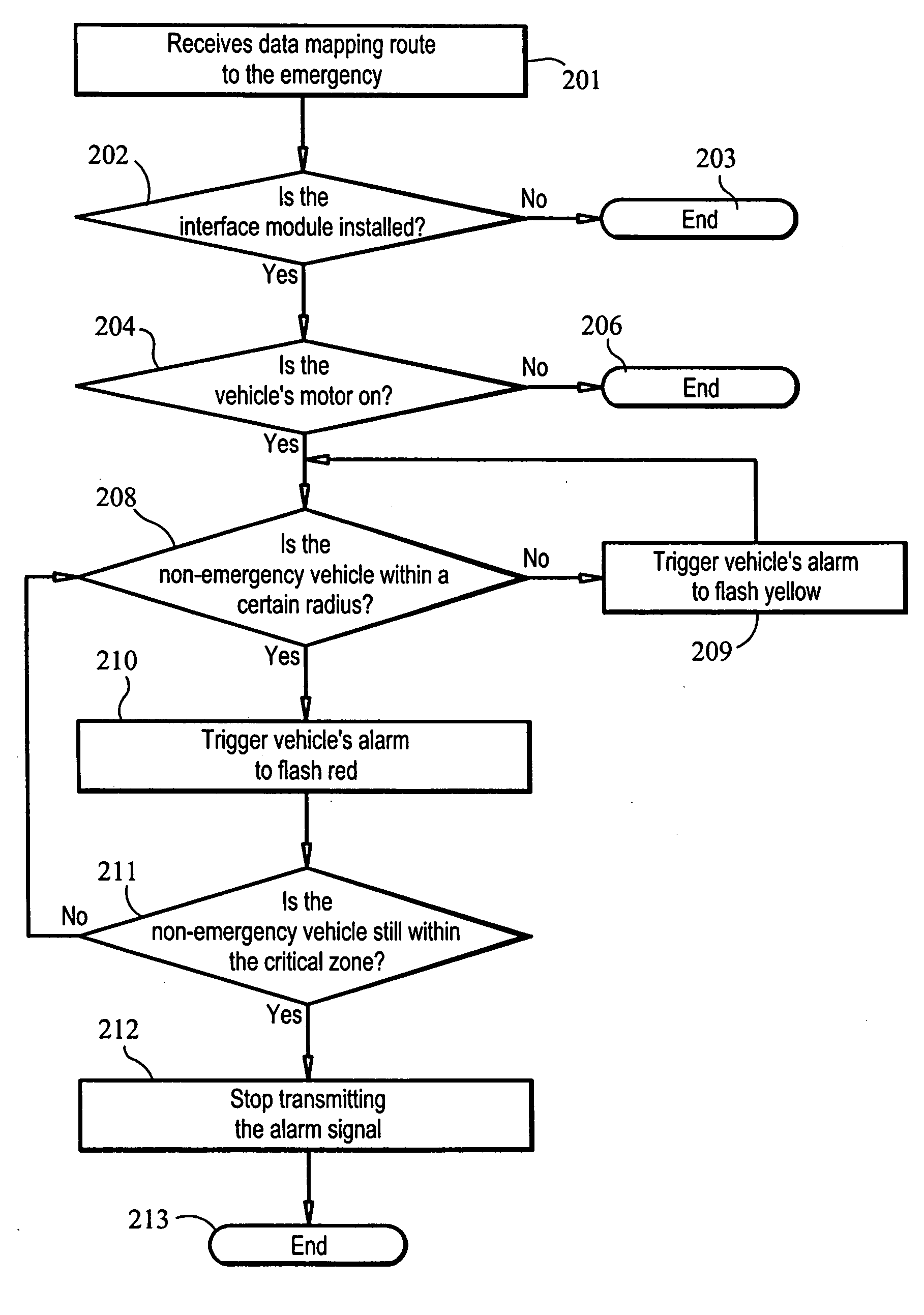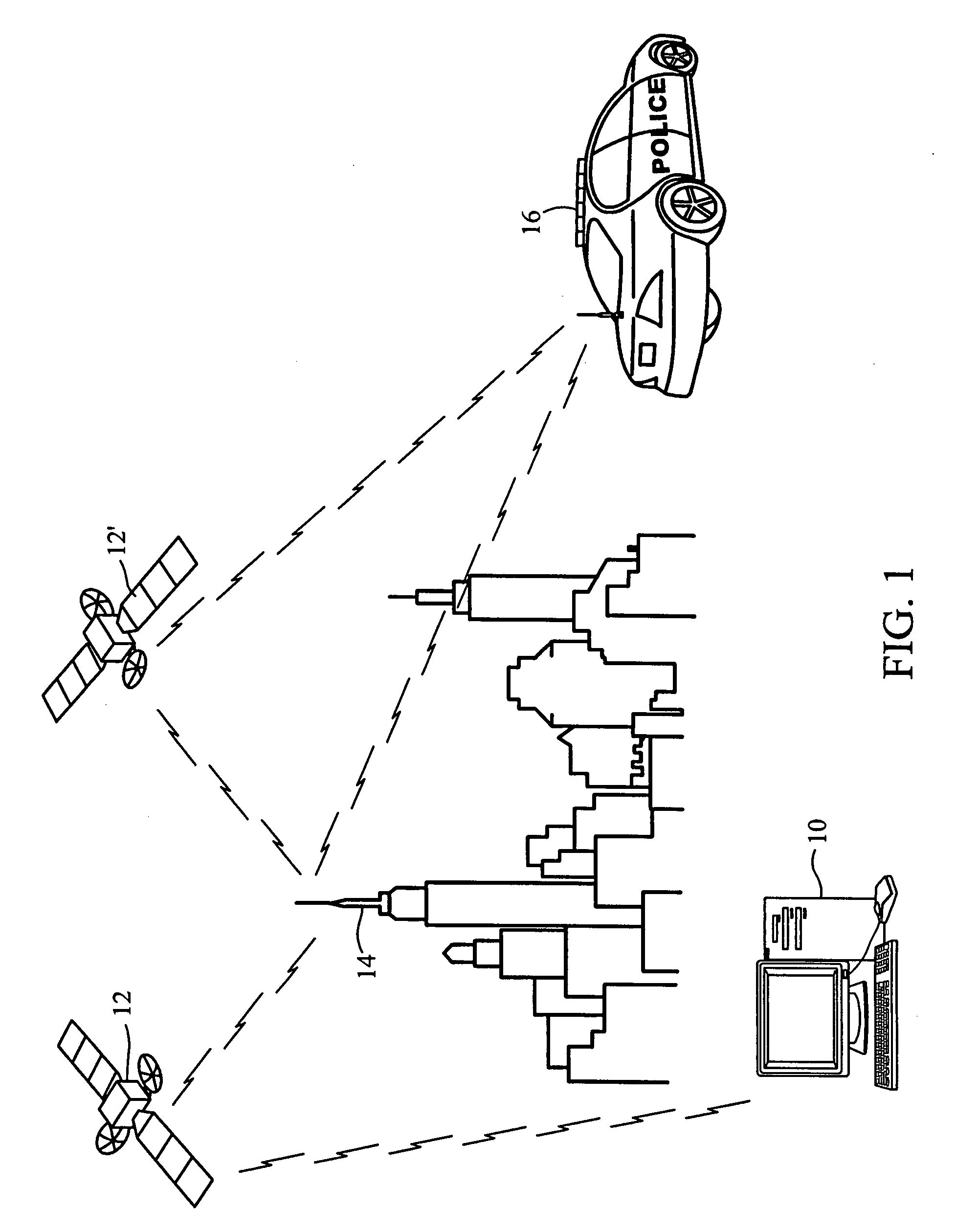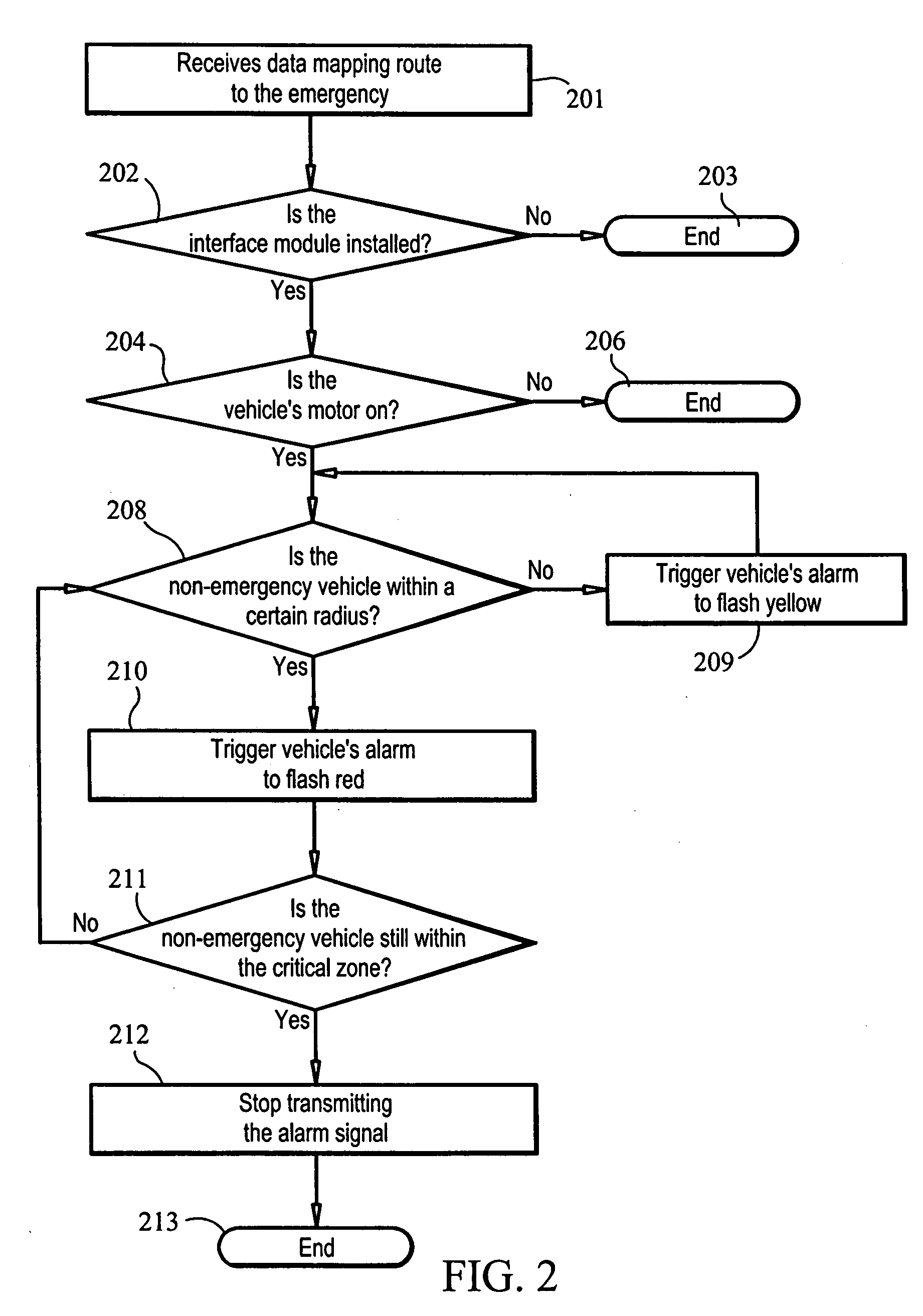Advanced warning system for emergency vehicles
- Summary
- Abstract
- Description
- Claims
- Application Information
AI Technical Summary
Benefits of technology
Problems solved by technology
Method used
Image
Examples
Embodiment Construction
[0020]The present invention is now described in more detail by reference to the exemplary drawings in detail wherein like numerals indicate like elements throughout the various views. This is for convenience only and is not intended to limit the application of the present invention. In fact, after reading the following description, it will be apparent to one skilled in the relevant art(s) how to implement the following invention in alternate embodiments.
[0021]The present invention comprises of two major components—transmitter component 10 and an Interface Module 22. The transmitter component 10 further comprises of transmitting means 102 for transmitting and receiving information to or from satellites and or other communication devices; a signal generation means 104 for generating signals; an alarm generating means 106 for activating and controlling alarms in non-emergency vehicles equipped with the Interface Module 22; and a location determining means 108 for determining the locati...
PUM
 Login to View More
Login to View More Abstract
Description
Claims
Application Information
 Login to View More
Login to View More - R&D
- Intellectual Property
- Life Sciences
- Materials
- Tech Scout
- Unparalleled Data Quality
- Higher Quality Content
- 60% Fewer Hallucinations
Browse by: Latest US Patents, China's latest patents, Technical Efficacy Thesaurus, Application Domain, Technology Topic, Popular Technical Reports.
© 2025 PatSnap. All rights reserved.Legal|Privacy policy|Modern Slavery Act Transparency Statement|Sitemap|About US| Contact US: help@patsnap.com



